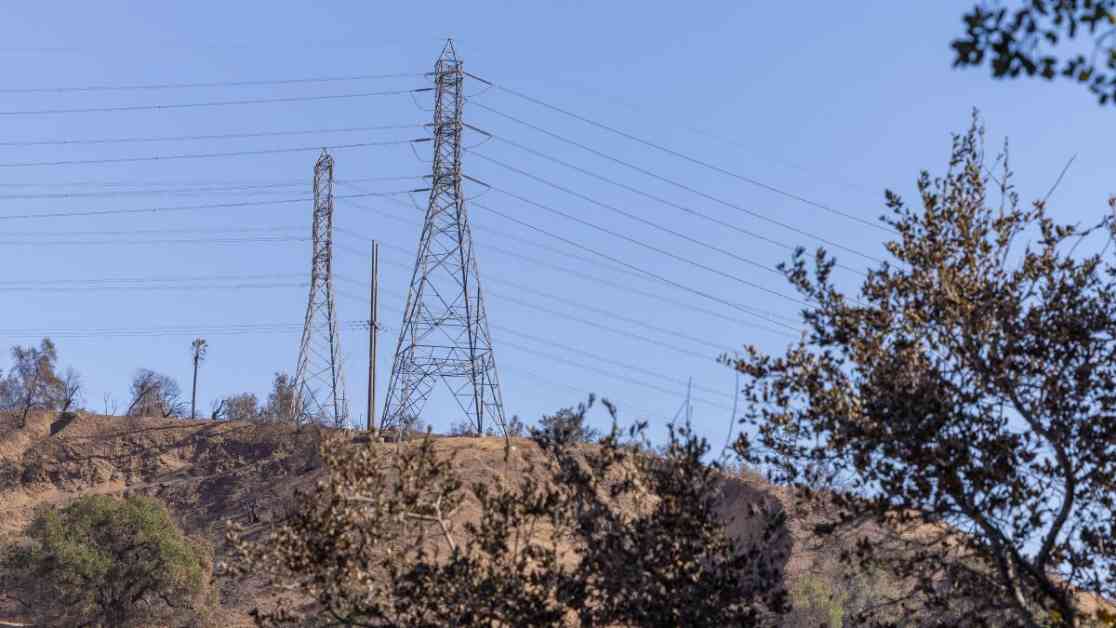Title: Southern California Edison Under Fire for Safety Practices Leading to Eaton Fire Tragedy
Southern California Edison is facing intense scrutiny from state regulators and the public following revelations that the utility company may have failed to adequately inspect transmission lines in high-risk wildfire areas. The recent deadly Eaton fire, which claimed the lives of at least 17 people and destroyed thousands of homes, has raised serious concerns about the company’s safety practices.
State documents obtained by regulators show that Edison was criticized for lagging behind in inspecting transmission lines in areas prone to wildfires just months before the Eaton fire broke out. Utility safety officials also raised alarms about the company’s visual inspections of splices in its transmission lines, which were reportedly failing to detect potentially dangerous issues. Instead, problems were only discovered when the lines were inspected using X-ray equipment, a method that is not commonly used.
The California Office of Energy Infrastructure Safety issued a report highlighting these deficiencies less than three months before devastating wildfires ravaged Los Angeles County. Fire investigators are now looking into whether the Eaton fire was sparked by Edison’s electrical equipment, adding fuel to the ongoing controversy surrounding the company’s safety protocols.
Edison’s Response and Legal Challenges
In response to the mounting criticism, Edison defended its efforts to mitigate wildfire risks, claiming that its measures had reduced the likelihood of catastrophic fires by up to 90% since 2018. The company pledged to continue conducting inspections in high-risk areas more frequently than required, emphasizing its commitment to public safety.
However, the company now faces four lawsuits accusing it of being responsible for starting the Eaton fire. Despite Edison’s denial of these allegations and its assertion that its equipment did not cause the blaze, residents have shared videos and photos showing flames near an electrical transmission tower before spreading rapidly towards homes.
Expert Opinion and Regulatory Oversight
Joseph Mitchell, an expert on California utilities’ wildfire prevention plans, expressed concerns about the findings of the October report, noting that X-ray equipment used by Edison to identify transmission line issues is not widely utilized and poses technical challenges. Mitchell highlighted the potential risks posed by faulty splices in transmission lines, which could lead to catastrophic failures if not properly addressed.
Regulators have also questioned the effectiveness of Edison’s repairs to aging transmission lines, particularly in high-risk fire zones. Safety officials have urged the company to improve its response to environmental constraints that have impeded inspection efforts, emphasizing the importance of proactive measures to prevent future wildfires.
The Road Ahead: Regulatory Review and Industry Changes
As regulators prepare to evaluate Edison’s wildfire mitigation plan and response to the Eaton fire tragedy, industry experts like Michael Wara from Stanford University are calling for continuous improvement in utility safety practices. Wara emphasized the need for utilities to prioritize ongoing enhancements to their infrastructure to minimize wildfire risks and protect communities.
The recent spate of wildfires linked to transmission line failures has underscored the urgency of reevaluating safety protocols and inspection procedures within the utility sector. Robert McCullough, an electric utility consultant, emphasized the need for a fundamental shift in how companies approach equipment inspections to prevent future disasters.
The aftermath of the Eaton fire has sparked a national conversation about the critical role of utilities in safeguarding against wildfires and the importance of robust regulatory oversight to hold companies accountable for public safety. As communities grapple with the devastating impacts of these tragedies, the question remains: How can we prevent future disasters and ensure the safety of our homes and families?
Power lines in Eaton Canyon on Sunday, Jan. 12, 2025 in Pasadena. (Brian van der Brug/Los Angeles Times)
Fire agencies are also investigating whether the company’s equipment started last week’s Hurst fire near Sylmar, which led to mandatory evacuations and burned nearly 800 acres before crews got it under control. A downed powerline was discovered near one of the company’s transmission towers. Edison said it doesn’t know whether the damage occurred before or after the start of the fire.




